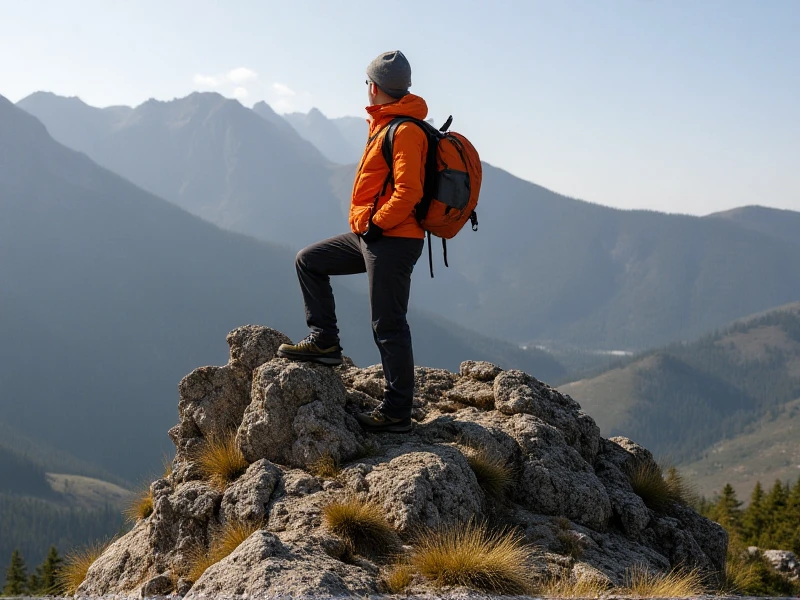The Essential Guide to Choosing Men's Hiking Shoes for Peak Performance
2025-06-10

Here is an SEO-optimized article about men's hiking shoes:
Hitting the trail is an incredible way to challenge yourself and connect with nature. Whether you're tackling a local path or venturing into rugged mountain terrain, your footwear is arguably your most critical piece of gear. The right pair of men's hiking shoes provides the foundation for a comfortable, safe, and enjoyable adventure. Choosing poorly, however, can lead to blisters, fatigue, and even injury.
Why Invest in Quality Men's Hiking Shoes?
Dedicated hiking footwear for men isn't just sneakers with a different name. They're engineered for the specific demands of uneven, sometimes treacherous ground. Their key roles include:
Protection: Shielding feet from sharp rocks, roots, debris, and trail hazards. Robust outsoles and sturdy uppers are crucial.
Support: Stabilizing ankles and arches to prevent twists and sprains on uneven terrain. Look for torsion control midsoles and heel counters.
Traction: Grip is non-negotiable. Aggressive lug patterns on durable rubber outsoles prevent slips on mud, wet rock, and loose gravel.
Comfort & Cushioning: Absorbing impact over miles takes specialized midsoles. Properly cushioned hiking shoes reduce foot fatigue significantly.
Durability: Trail surfaces are harsh. Quality materials built for hiking withstand constant abrasion and flexing.
Key Factors When Selecting Your Men's Hiking Shoes
Choosing the best pair involves considering your needs and environment:
1. Trail Type & Terrain:
Easy to Moderate Trails (Well-maintained paths): Focus on lightweight hiking shoes or even trail runners for flexibility and speed. Breathability is often key here.
Moderate to Rugged Terrain (Rocks, roots, uneven surfaces): Prioritize stability, ankle support (often mid-cut hiking boots), and aggressive traction. Robust midsoles and durable uppers become critical.
Heavy Loads/Extended Trips (Backpacking): Opt for sturdy durable hiking boots offering maximum support and protection, potentially sacrificing some weight.
2. Fit & Comfort: This is paramount. Visit a specialty outdoor store, get measured properly (including width), and try shoes on in the afternoon when feet swell. Wear the hiking socks you'll use. There should be minimal heel slippage, ample toe room (about a thumbnail's width beyond longest toe), and no significant pressure points. Break new men's hiking shoes in thoroughly before tackling a long hike!
3. Protection & Support:
Ankle Height: Low-cut ("hiking shoes") offer agility; mid-cut ("boots") provide crucial ankle support on uneven ground; high-cut offers maximum support for heavy packs or unstable ankles but is less common for standard hiking.
Underfoot Protection: Stone guards or rock plates shield from sharp impacts underfoot. Essential for rocky trails. Look for thick, supportive midsoles.
4. Waterproofness:
Waterproof Membranes (Gore-Tex® or similar): Essential for wet, muddy trails, crossing streams, or walking through dew-covered brush. Greatly enhances foot comfort in damp conditions but is less breathable than non-waterproof options.
Highly Breathable (Non-Waterproof): Best for dry, hot climates or known dry trails. Offers superior breathability and cools feet quickly. Ideal if you prioritize airflow over wet protection.
5. Outsole & Traction: Look for deep, multi-directional lugs made of sticky rubber. Vibram® soles or other reputable brands signal proven traction. Patterns designed to shed mud are a plus.
Top Considerations for Men:
Foot Shape: Men's hiking footwear caters specifically to the typically wider forefoot and overall larger foot volume compared to women’s models. Ensure the shoe brand offers a dedicated, properly last-designed men’s option.
Weight: Lightweight men's hiking shoes reduce fatigue over miles but may sacrifice some ruggedness. Balance weight with the protection & support required for your intended use.
Trusted Brands for Men's Hiking Footwear
The market offers excellent choices tailored to men's needs. Leading brands consistently delivering quality include:
Salomon: Renowned for innovative comfort, precise fit, and excellent "out-of-the-box" feel in lightweight hiking shoes and rugged boots.
Merrell: A favorite for accessible comfort and durability across various price points and styles, from approach shoes to sturdy hiking boots.
Keen: Known for roomier toe boxes, excellent waterproofing tech (Keen.Dry), and durable construction. Great for wider or high-volume feet.
Vasque: Offers exceptional support, stability, and build quality, particularly in their mid-cut hiking boots.
Lowa: Premium brand known for boots built on supportive chassis systems for exceptional stability on demanding terrain. (Mid to higher price point).
Oboz: Gaining recognition for excellent arch support, stability, and durable outsoles ("O FIT Insoles," "Granite Peak" sole).
Maintenance & Care Tips:
Investing in care prolongs the life of your hiking boots or shoes significantly:
1. Clean: Brush off mud & debris after every hike. Use specialized footwear cleaners with soft brushes. Never put them in a washing machine or dryer.
2. Dry Thoroughly: Air dry away from direct heat sources. Remove insoles and use boot trees or crumpled paper inside to maintain shape and absorb moisture. Crucial after wet hikes!
3. Condition: For leather boots, periodic conditioning prevents cracking. Nubuck/suede require specific treatments to maintain water resistance. Follow manufacturer guidance.
4. Re-waterproof: Waterproof membranes weaken over time. Reapply DWR (Durable Water Repellent) treatments on the outer fabric periodically (after deep cleans or when water no longer beads).
5. Replace Insoles: High-quality aftermarket insoles can enhance comfort and support, extending the usable life of otherwise good shoes.
Ready to Explore?
Taking the time to evaluate your hiking environment, prioritize features like support and waterproofing, and get a perfect fit is essential. Quality men's hiking shoes or boots are an investment in your comfort, safety, and overall trail enjoyment. Visit a reputable outdoor retailer, consult with knowledgeable staff, and equip your feet with the perfect foundation for your next adventure. Your feet (and your hiking buddies) will thank you!
Category: